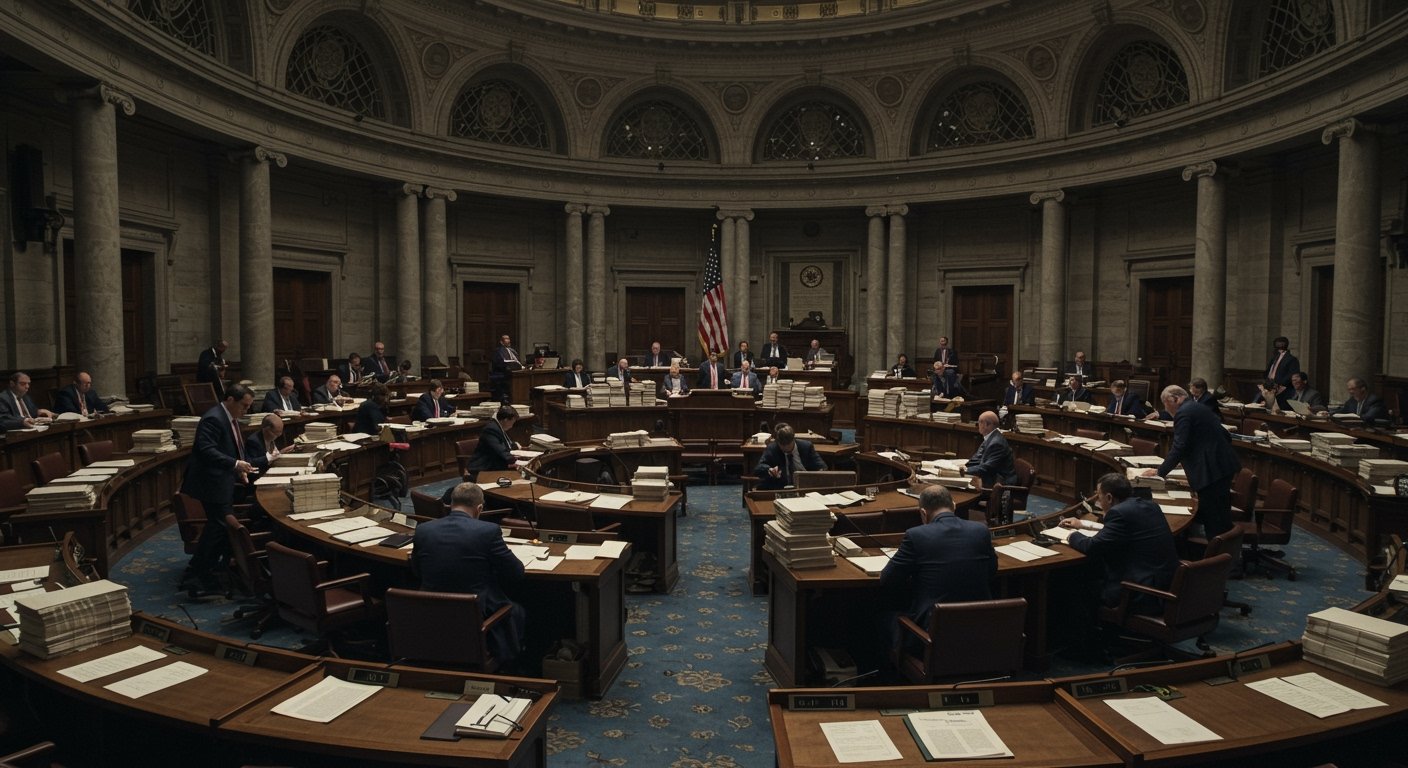WASHINGTON D.C. – The United States Senate commenced a rigorous debate Sunday over a sprawling 940-page legislative package, colloquially dubbed the “big beautiful bill”, as lawmakers hurtle towards critical votes and a looming July 4 deadline.
The debate, which began around 3 p.m. Eastern Time on Sunday, June 29, followed a lengthy procedural maneuver by Democrats who forced a full reading of the extensive bill. This reading, undertaken to highlight the legislation’s sheer size and complexity, stretched from Saturday well into Sunday, underscoring the deep partisan divisions surrounding the measure. Republicans, despite internal disagreements, ultimately reached a consensus allowing the formal debate to proceed.
Unpacking the “Big Beautiful Bill”
The substance of the bill, at the heart of the contention, is primarily centered on tax policy and its implications for the national debt and social programs. A key provision aims to make the 2017 tax cuts, enacted during the previous administration, permanent. This move would prevent a scheduled tax increase slated for December, a change proponents argue is essential for economic stability and growth.
However, critics, including many Democrats and some Republicans, contend that the bill disproportionately benefits the wealthiest Americans. Furthermore, non-partisan analyses cited by opponents suggest the legislation would add over $3 trillion to the national debt over the next decade. Concerns have also been raised about the bill’s potential impact on vital social safety net programs such as Medicaid and SNAP (Supplemental Nutrition Assistance Program), though specific details on these potential impacts remain a point of fierce debate among lawmakers.
Political Fault Lines and Defections
The legislative process has illuminated existing fault lines within both parties. Notably, two Republican senators, Senator Tom Tillis of North Carolina and Senator Rand Paul of Kentucky, have publicly announced their opposition to the bill.
Senator Tillis’s defection carries particular political weight, as he recently announced he is not seeking re-election. His decision came after facing the threat of a primary challenge orchestrated by President Trump, specifically tied to his potential opposition to legislative priorities like this tax bill. This highlights the intense pressure lawmakers face from within their party and from external political forces.
The Path to “Voterama”
The Senate is bracing for a procedural showdown known as a “voterama,” a marathon session where senators can offer an unlimited number of amendments to the bill. This phase is expected to commence at 9:00 a.m. Eastern Time on Monday, June 30. Voteramas are often used by the minority party to force politically difficult votes for the majority and can significantly alter the final shape of legislation or serve to delay its passage.
With a razor-thin majority, Senate Majority Leader John Thun faces a significant challenge. According to current counts, he can afford to lose only one more vote from his caucus to pass the bill. Should the vote tally result in a tie, Vice President JD Vance, in his capacity as President of the Senate, holds the tiebreaking vote, a scenario that could prove crucial given the divided chamber.
Deadline Approaches
The clock is ticking for the Senate to act, with the stated deadline for completing work on the bill set for July 4. If the bill successfully navigates the Senate’s procedural hurdles and secures passage, it would then advance to the House of Representatives for consideration. The path forward remains uncertain, fraught with political peril and the potential for significant amendments during the upcoming voterama session.
The outcome of this legislative battle will have far-reaching implications for the U.S. economy, tax policy, the national debt, and potentially crucial social programs, making the coming hours on the Senate floor exceptionally critical.





